-
 Bitcoin
Bitcoin $83,340.5735
4.40% -
 Ethereum
Ethereum $1,567.5957
2.44% -
 Tether USDt
Tether USDt $0.9995
0.03% -
 XRP
XRP $2.0241
2.36% -
 BNB
BNB $588.7605
2.03% -
 Solana
Solana $120.9413
6.83% -
 USDC
USDC $0.9999
0.00% -
 Dogecoin
Dogecoin $0.1606
4.14% -
 TRON
TRON $0.2433
2.83% -
 Cardano
Cardano $0.6273
3.33% -
 UNUS SED LEO
UNUS SED LEO $9.3882
-0.21% -
 Chainlink
Chainlink $12.6948
4.96% -
 Avalanche
Avalanche $19.1208
4.38% -
 Toncoin
Toncoin $2.9666
0.48% -
 Stellar
Stellar $0.2348
1.73% -
 Shiba Inu
Shiba Inu $0.0...01225
4.94% -
 Sui
Sui $2.2053
4.98% -
 Hedera
Hedera $0.1684
-0.43% -
 Bitcoin Cash
Bitcoin Cash $312.4889
7.16% -
 MANTRA
MANTRA $6.3867
-0.35% -
 Litecoin
Litecoin $76.2336
3.63% -
 Polkadot
Polkadot $3.5575
1.96% -
 Dai
Dai $1.0000
0.02% -
 Hyperliquid
Hyperliquid $15.7303
10.12% -
 Bitget Token
Bitget Token $4.3140
2.46% -
 Ethena USDe
Ethena USDe $0.9988
0.03% -
 Pi
Pi $0.6178
4.84% -
 Monero
Monero $205.6904
2.51% -
 Uniswap
Uniswap $5.2580
4.28% -
 OKB
OKB $53.4003
1.09%
How to manually adjust the gas fee of the Exodus wallet?
Manually adjusting gas fees in Exodus wallet involves using third-party services like MetaMask to set custom fees, balancing transaction speed and cost on Ethereum.
Apr 04, 2025 at 12:00 am
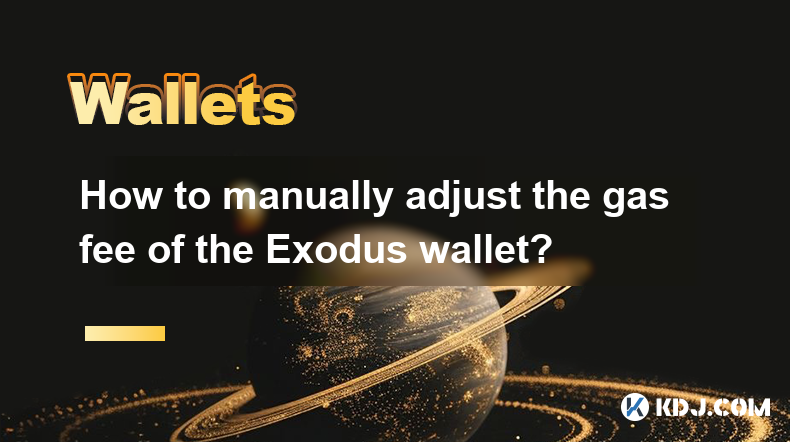
Adjusting the gas fee on the Exodus wallet can be a crucial step for users looking to optimize their transactions on the Ethereum network. Gas fees are payments made to miners for processing transactions and executing smart contracts. By manually adjusting these fees, users can balance between transaction speed and cost. This article will guide you through the process of manually adjusting the gas fee in the Exodus wallet, ensuring you can make informed decisions about your Ethereum transactions.
To start, it's essential to understand that the Exodus wallet, while user-friendly, does not offer a direct interface for adjusting gas fees. However, you can still influence the gas fee by using a workaround that involves sending transactions through a third-party service. This method requires some technical know-how but can be mastered with patience and practice.
Understanding Gas Fees
Before diving into the manual adjustment process, it's important to grasp the concept of gas fees. Gas fees are measured in 'gwei', a denomination of the cryptocurrency ether (ETH). The fee is determined by two components: gas limit and gas price. The gas limit is the maximum amount of gas you're willing to use for your transaction, while the gas price is the amount you're willing to pay per unit of gas.
- Gas Limit: This is the maximum amount of gas you're willing to spend on a transaction. It's set by the sender to ensure the transaction can be completed.
- Gas Price: This is the amount you're willing to pay per unit of gas. A higher gas price can lead to faster transaction processing.
Understanding these components will help you make more informed decisions when adjusting your gas fees manually.
Preparing for Manual Adjustment
To manually adjust the gas fee in the Exodus wallet, you'll need to use a third-party service like MetaMask or MyCrypto. These services allow you to set custom gas fees before sending the transaction to the Ethereum network. Here's how you can prepare:
- Install a Third-Party Wallet: Download and install a wallet like MetaMask or MyCrypto. These wallets are compatible with Exodus and can be used to adjust gas fees.
- Connect to Exodus: Ensure that your third-party wallet is connected to your Exodus wallet. This usually involves importing your Exodus wallet's private key or using a hardware wallet that's compatible with both platforms.
- Understand the Interface: Familiarize yourself with the interface of the third-party wallet. Look for options to set custom gas prices and limits.
Step-by-Step Guide to Adjusting Gas Fees
Now that you're prepared, follow these steps to manually adjust the gas fee in your Exodus wallet using a third-party service:
- Open Exodus Wallet: Start by opening your Exodus wallet and navigating to the Ethereum section.
- Initiate a Transaction: Click on 'Send' to initiate a transaction. Enter the recipient's address and the amount of ETH you want to send.
- Copy Transaction Details: Before clicking 'Send', copy the transaction details, including the recipient's address and the amount.
- Open Third-Party Wallet: Open your third-party wallet (e.g., MetaMask or MyCrypto).
- Create a Custom Transaction: In the third-party wallet, create a new transaction using the details you copied from Exodus. Look for an option to set a custom gas price and limit.
- Set Gas Price and Limit: Adjust the gas price and limit according to your preferences. A higher gas price will result in faster transaction processing but at a higher cost.
- Sign and Broadcast: Once you've set your custom gas fee, sign the transaction with your private key and broadcast it to the Ethereum network.
- Monitor the Transaction: Keep an eye on the transaction status in both your Exodus and third-party wallets to ensure it's processed successfully.
Tips for Optimizing Gas Fees
Adjusting gas fees manually can be tricky, but with the right approach, you can optimize your transactions. Here are some tips to help you:
- Monitor Network Congestion: Use tools like Etherscan to monitor the current state of the Ethereum network. During times of high congestion, you may need to set a higher gas price to ensure your transaction is processed quickly.
- Use Gas Price Estimators: Websites like ETH Gas Station provide real-time gas price estimates. These can help you set an appropriate gas price based on current network conditions.
- Experiment with Different Fees: Don't be afraid to experiment with different gas prices and limits. Over time, you'll get a better sense of what works best for your needs.
- Consider Transaction Batching: If you need to send multiple transactions, consider batching them into a single transaction. This can help reduce overall gas costs.
Common Pitfalls to Avoid
When manually adjusting gas fees, there are several common pitfalls to watch out for:
- Setting Gas Price Too Low: If you set the gas price too low, your transaction may get stuck in the mempool and never be processed. Always ensure your gas price is competitive with current network conditions.
- Setting Gas Limit Too Low: If the gas limit is set too low, your transaction may fail to execute. Make sure the gas limit is sufficient for the transaction to complete.
- Ignoring Network Conditions: Failing to consider current network congestion can lead to delays or failed transactions. Always check the network status before setting your gas fees.
- Not Verifying Transaction Details: Always double-check the recipient's address and the amount before broadcasting the transaction. Mistakes can be costly and irreversible.
Advanced Techniques for Gas Fee Management
For more advanced users, there are additional techniques you can use to manage gas fees effectively:
- Using Gas Tokens: Gas tokens like CHI can help you save on gas fees by allowing you to 'pre-pay' for gas at a lower rate. These tokens can be particularly useful during times of high network congestion.
- Leveraging Layer 2 Solutions: Consider using layer 2 scaling solutions like Optimism or Arbitrum. These solutions can significantly reduce gas fees by processing transactions off the main Ethereum chain.
- Automating Gas Fee Adjustments: Some advanced wallets and services offer automated gas fee adjustments based on real-time network conditions. These can be a convenient way to optimize your transactions without manual intervention.
Frequently Asked Questions
Q: Why can't I adjust the gas fee directly in the Exodus wallet?
A: The Exodus wallet is designed to be user-friendly and does not offer a direct interface for adjusting gas fees. However, you can use third-party services like MetaMask or MyCrypto to set custom gas fees before sending transactions from Exodus.
Q: What is the difference between gas price and gas limit?
A: Gas price is the amount you're willing to pay per unit of gas, measured in gwei. Gas limit is the maximum amount of gas you're willing to use for a transaction. Setting an appropriate gas price and limit is crucial for ensuring your transaction is processed efficiently and cost-effectively.
Q: How can I check the current gas price on the Ethereum network?
A: You can use tools like Etherscan or ETH Gas Station to check the current gas price on the Ethereum network. These tools provide real-time data on network congestion and recommended gas prices.
Q: What happens if I set the gas price too low?
A: If you set the gas price too low, your transaction may get stuck in the mempool and never be processed. Miners prioritize transactions with higher gas prices, so setting a competitive gas price is essential for timely transaction processing.
Q: Can I use gas tokens to save on fees?
A: Yes, gas tokens like CHI can help you save on gas fees by allowing you to 'pre-pay' for gas at a lower rate. These tokens can be particularly useful during times of high network congestion.
Q: Are there any risks associated with manually adjusting gas fees?
A: Yes, there are risks involved. Setting the gas price too low can result in delayed or failed transactions, while setting the gas limit too low can cause the transaction to fail to execute. Always double-check your settings and consider current network conditions before adjusting gas fees.
Disclaimer:info@kdj.com
The information provided is not trading advice. kdj.com does not assume any responsibility for any investments made based on the information provided in this article. Cryptocurrencies are highly volatile and it is highly recommended that you invest with caution after thorough research!
If you believe that the content used on this website infringes your copyright, please contact us immediately (info@kdj.com) and we will delete it promptly.
- The Lomond School in Scotland will accept Bitcoin (BTC) tuition payments
- 2025-04-12 07:10:13
- Investor Interest in Ripple Labs-Linked XRP Continues to Rise Following the Launch of the Teucrium 2x Long Daily XRP ETF
- 2025-04-12 07:10:13
- US Senate Draft Legislation Threatens to Hit Data Centers Serving Blockchain Networks and Artificial Intelligence Models with Fees
- 2025-04-12 07:05:13
- New US Senate Draft Legislation Threatens to Penalize Data Centers Serving Bitcoin (BTC) Miners and AI Models
- 2025-04-12 07:05:13
- Ethena Labs Partners with Chainlink, Harris & Trotter, Chaos Labs and LlamaRisk to Launch Proof of Reserves for Its Synthetic Dollar Stablecoin
- 2025-04-12 07:00:13
- BetMGM Bonus Code CUSE150 Extended Through April, Giving New Users a Chance to Secure a $150 Bonus
- 2025-04-12 07:00:13
Related knowledge
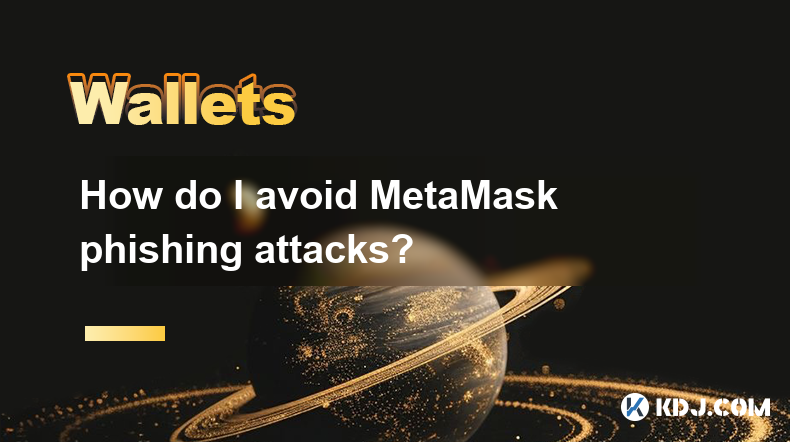
How do I avoid MetaMask phishing attacks?
Apr 12,2025 at 04:42am
Understanding MetaMask Phishing AttacksMetaMask is a popular cryptocurrency wallet that allows users to manage their Ethereum and other compatible tokens directly in their web browsers. However, its popularity has made it a prime target for phishing attacks. Phishing attacks are fraudulent attempts to steal users' sensitive information, such as private ...
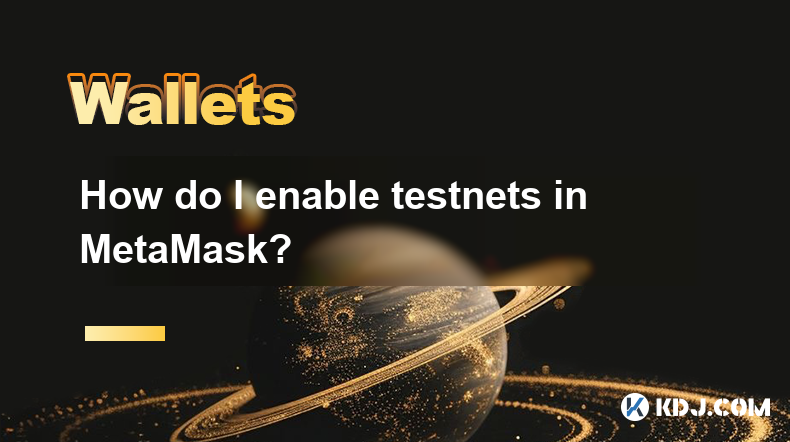
How do I enable testnets in MetaMask?
Apr 12,2025 at 04:01am
Enabling testnets in MetaMask is a straightforward process that allows you to interact with various test networks for testing and development purposes. Here’s a detailed guide on how to enable testnets in MetaMask, along with explanations of what testnets are and why they are important. What Are Testnets?Testnets, or test networks, are alternative block...
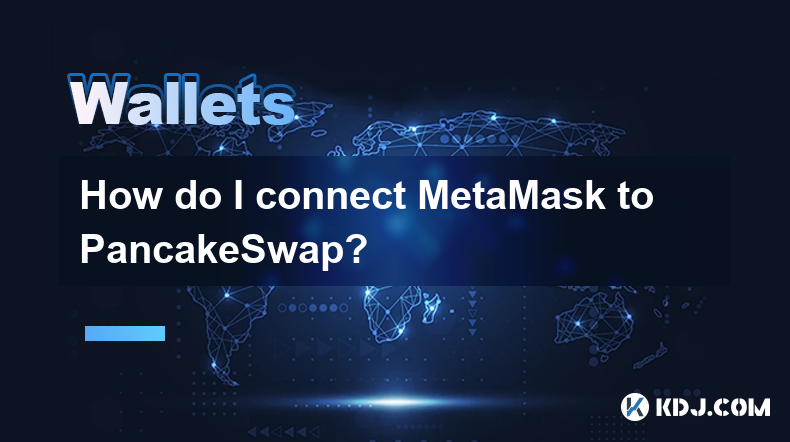
How do I connect MetaMask to PancakeSwap?
Apr 12,2025 at 05:08am
Connecting MetaMask to PancakeSwap is a straightforward process that allows you to interact with the decentralized exchange on the Binance Smart Chain (BSC). This guide will walk you through the steps to set up and connect your MetaMask wallet to PancakeSwap, ensuring you can trade tokens seamlessly. Setting Up MetaMask for BSCBefore you can connect to ...
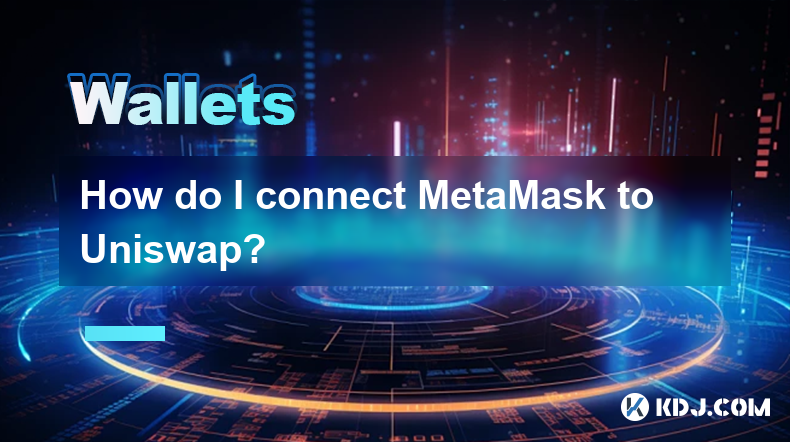
How do I connect MetaMask to Uniswap?
Apr 12,2025 at 03:14am
Connecting MetaMask to Uniswap is a straightforward process that allows you to interact with one of the most popular decentralized exchanges (DEXs) on the Ethereum blockchain. In this guide, we will walk you through the steps to connect your MetaMask wallet to Uniswap, ensuring you can trade tokens seamlessly. Installing MetaMaskBefore you can connect t...
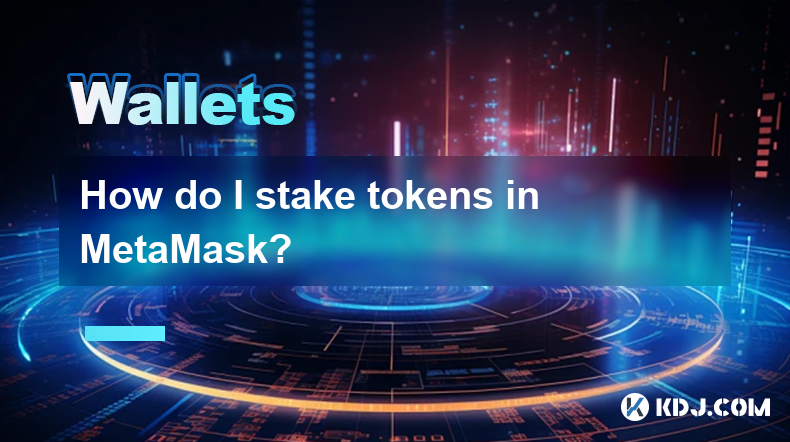
How do I stake tokens in MetaMask?
Apr 12,2025 at 12:14am
Introduction to Staking in MetaMaskStaking has become a popular way for cryptocurrency holders to earn passive income by participating in the validation of blockchain transactions. MetaMask, a widely-used Ethereum wallet, now supports staking for certain tokens directly within its platform. This article will guide you through the process of staking toke...
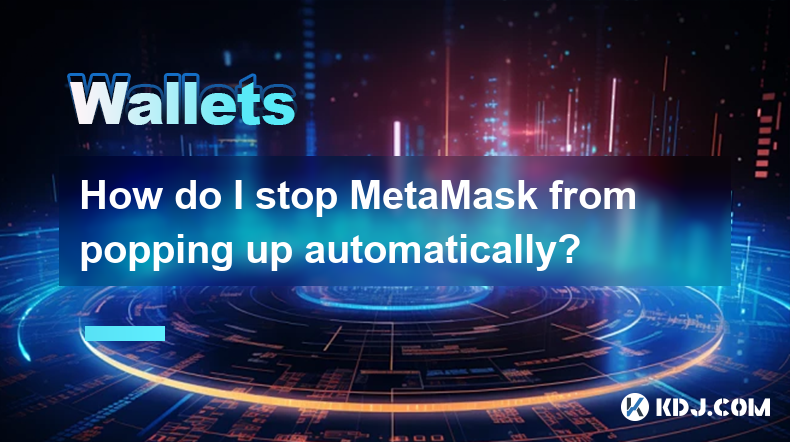
How do I stop MetaMask from popping up automatically?
Apr 11,2025 at 11:14pm
Understanding the Issue with MetaMask Automatic Pop-upsMetaMask is a popular cryptocurrency wallet and gateway to blockchain applications. Users often find that the extension pops up automatically, which can be both annoying and disruptive. This behavior typically occurs when a website or application attempts to interact with the Ethereum blockchain, pr...

How do I avoid MetaMask phishing attacks?
Apr 12,2025 at 04:42am
Understanding MetaMask Phishing AttacksMetaMask is a popular cryptocurrency wallet that allows users to manage their Ethereum and other compatible tokens directly in their web browsers. However, its popularity has made it a prime target for phishing attacks. Phishing attacks are fraudulent attempts to steal users' sensitive information, such as private ...

How do I enable testnets in MetaMask?
Apr 12,2025 at 04:01am
Enabling testnets in MetaMask is a straightforward process that allows you to interact with various test networks for testing and development purposes. Here’s a detailed guide on how to enable testnets in MetaMask, along with explanations of what testnets are and why they are important. What Are Testnets?Testnets, or test networks, are alternative block...

How do I connect MetaMask to PancakeSwap?
Apr 12,2025 at 05:08am
Connecting MetaMask to PancakeSwap is a straightforward process that allows you to interact with the decentralized exchange on the Binance Smart Chain (BSC). This guide will walk you through the steps to set up and connect your MetaMask wallet to PancakeSwap, ensuring you can trade tokens seamlessly. Setting Up MetaMask for BSCBefore you can connect to ...

How do I connect MetaMask to Uniswap?
Apr 12,2025 at 03:14am
Connecting MetaMask to Uniswap is a straightforward process that allows you to interact with one of the most popular decentralized exchanges (DEXs) on the Ethereum blockchain. In this guide, we will walk you through the steps to connect your MetaMask wallet to Uniswap, ensuring you can trade tokens seamlessly. Installing MetaMaskBefore you can connect t...

How do I stake tokens in MetaMask?
Apr 12,2025 at 12:14am
Introduction to Staking in MetaMaskStaking has become a popular way for cryptocurrency holders to earn passive income by participating in the validation of blockchain transactions. MetaMask, a widely-used Ethereum wallet, now supports staking for certain tokens directly within its platform. This article will guide you through the process of staking toke...

How do I stop MetaMask from popping up automatically?
Apr 11,2025 at 11:14pm
Understanding the Issue with MetaMask Automatic Pop-upsMetaMask is a popular cryptocurrency wallet and gateway to blockchain applications. Users often find that the extension pops up automatically, which can be both annoying and disruptive. This behavior typically occurs when a website or application attempts to interact with the Ethereum blockchain, pr...
See all articles























































































